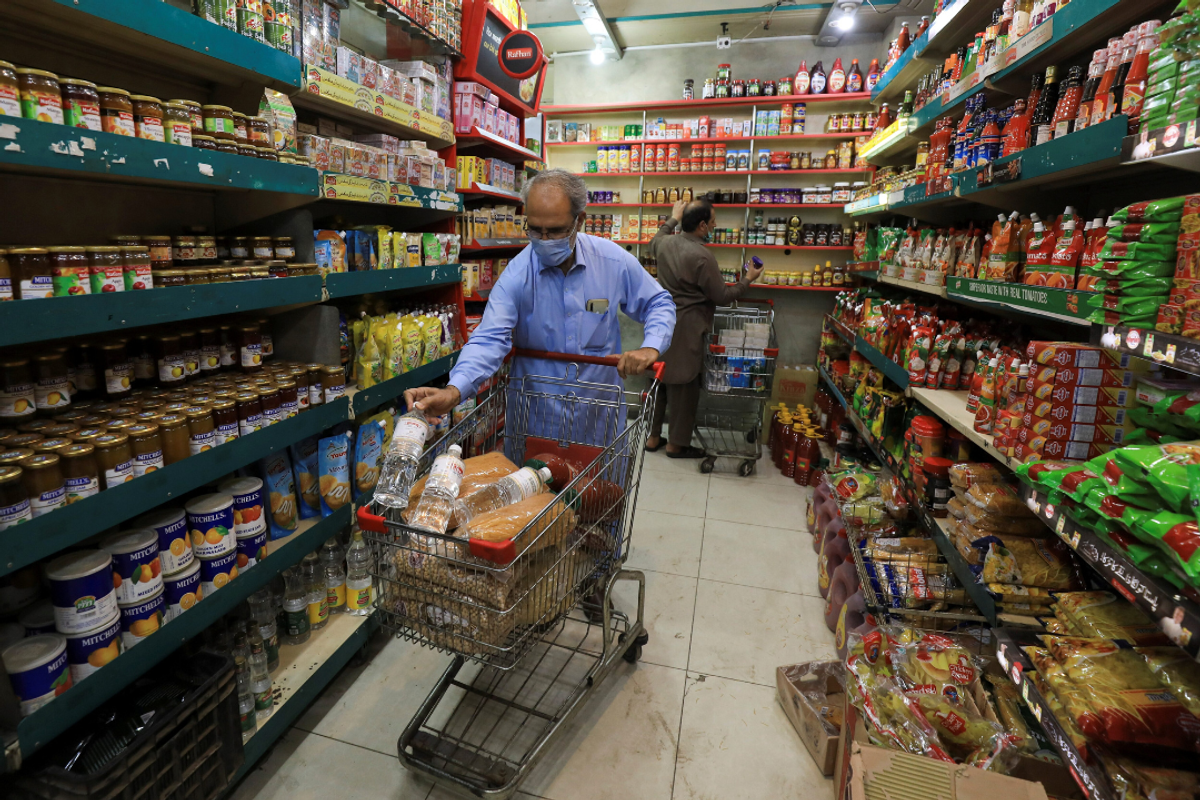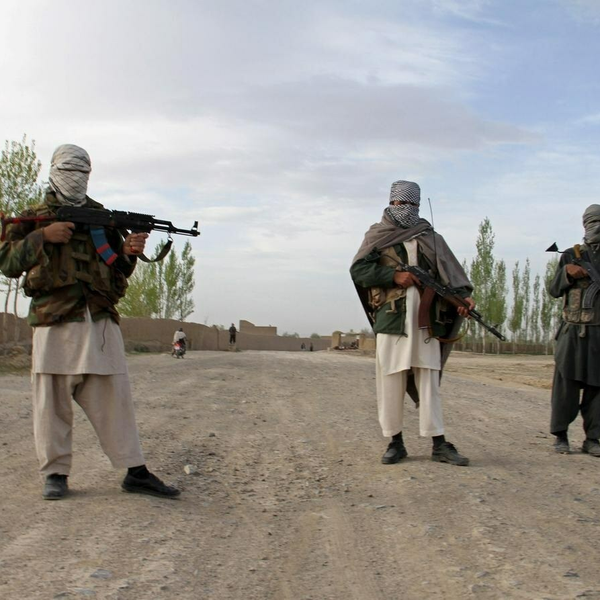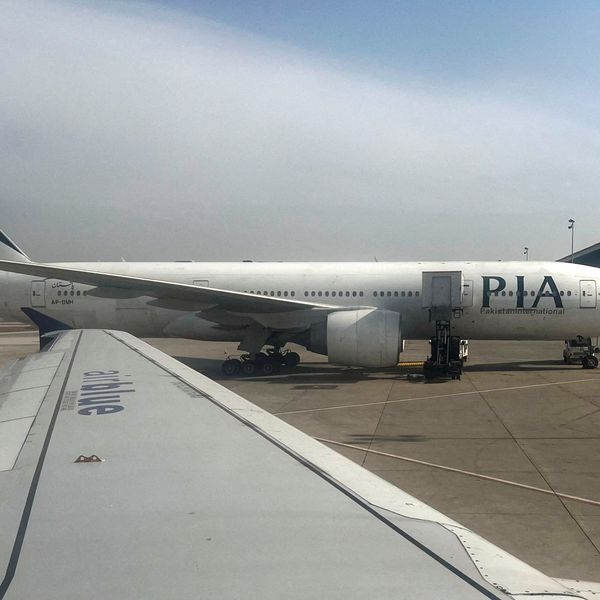Floods to drive Pakistan's inflation to 11-month high: report
Brokerage forecasts CPI at 6.5-7.5% in FY26, trims export growth to 1% while projecting reserves above $17B
Business Desk
The Business Desk tracks economic trends, market movements, and business developments, offering analysis of both local and global financial news.

A man shops at a grocery store in Karachi, Pakistan
Reuters
Pakistan’s inflation is expected to spike in the aftermath of this year’s floods, though the impact will likely be smaller and shorter-lived than during the previous two flood episodes, according to a report by Topline Securities.
The brokerage said the Consumer Price Index (CPI) for September is projected at 6.5-7.0% compared to 3.0% in August and 6.93% in September 2024. This would mark the highest reading in 11 months, with the 3.1% month-on-month rise being the steepest in 26 months.
The surge is being driven primarily by food prices. Wheat and wheat flour prices have risen 38-40% in the past four weeks, while tomatoes, potatoes and onions are up an average of 40%. Other increases include potatoes (+5.4%), rice (+4.3%), chicken (+4.1%), eggs (+3.5%) and sugar (+2.7%). Fruits are expected to remain flat, while vegetable prices may drop by about 10%.
Topline estimates food inflation during September at 8-9% month-on-month, pushing overall CPI expectations to 6.5-7.0%. The firm now forecasts average food inflation of 1.3% per month in FY26, with the first half averaging 2.16% and the second half just 0.42%.
“We raise our inflation forecast from 6-7% to 6.5-7.5% after accounting for these changes in food inflation,” the report said, adding that the government’s proactive measures to restore supplies or consider imports will help limit the duration of the shock.
Interest rates and external financing
Topline now expects the State Bank of Pakistan to keep policy rates unchanged through FY26, revising its earlier forecast of a bottom at 10% to 11%.
External debt servicing for FY26 is projected at USD 26 billion, with USD 16 billion expected to be rolled over or refinanced, leaving net repayments of USD 10-11 billion. With a current account deficit of USD 2-2.5 billion, gross financing needs are estimated at USD 10.5-11.5 billion.
The brokerage expects Pakistan to secure inflows of USD 14 billion in FY26, including USD 2.5 billion in foreign direct investment and USD 2.6 billion from the International Monetary Fund. Additional inflows are anticipated from bilateral and multilateral partners (USD 5.5 billion), private-sector disbursements (USD 1.2 billion), Eurobonds/Panda/Sukuk (USD 250 million), and commercial banks (USD 2 billion).
With reserves at USD 14.5 billion in June this year, Topline projects they will exceed USD 17 billion by June 2026.
Currency outlook
The rupee is forecast to revert to its historic depreciation trend of 5-7% per year, in line with inflation and interest rate differentials with trading partners. Topline sees the rupee trading between PKR 292 and PKR 297 per dollar by June 2026.
Exports and imports
Topline trimmed its FY26 export growth forecast to just 1%, or USD 32.6 billion, down from an earlier 4% or USD 33.5 billion. The firm noted that the impact of late sowing of cotton and rice crops typically emerges in the second half of the fiscal year.
In contrast, imports are expected to rise 10% in FY26, up from an earlier estimate of 9%. This includes non-oil imports growing 16% (previously 15%) and oil imports up 1%, with falling global prices offsetting higher volumes.
The report noted that during FY11, exports jumped 29% despite an 11% decline in cotton production, while in FY23, exports fell 14% due to a 41% plunge in cotton output.
Remittances
Topline revised its remittance growth forecast to 6% from 3.5%, projecting inflows of USD 40.2 billion in FY26, in line with the State Bank of Pakistan’s target. The brokerage cited historical trends where remittances rose during crises: up 26% in FY11 after floods, 27% in FY21 after COVID-19, and 10-19% following the 2006/07 earthquakes.
During FY11, overall inflation averaged 13.7% compared to 10.1% a year earlier, with food inflation at 18%. In FY23, average inflation was 29% and food inflation soared 39%, fueled by floods, currency depreciation, and higher energy tariffs.
Topline said the current floods will raise inflation, but not to the same magnitude as 2011 or 2022-23.







Comments
See what people are discussing